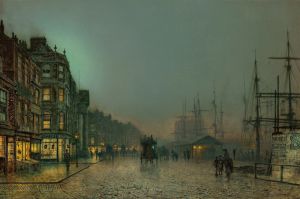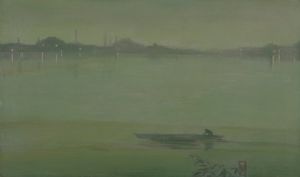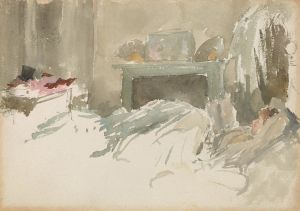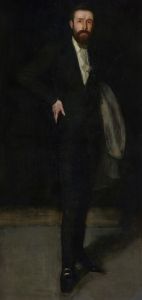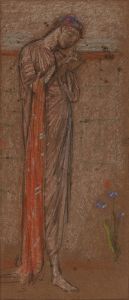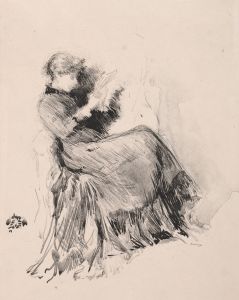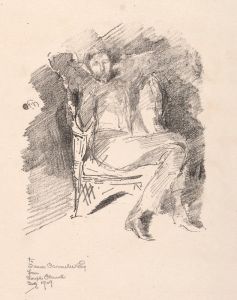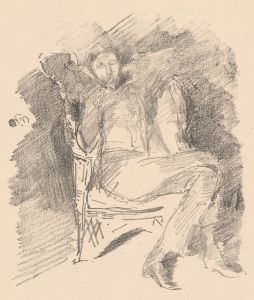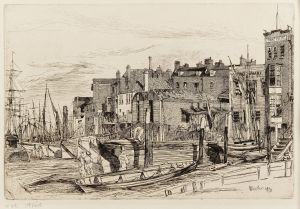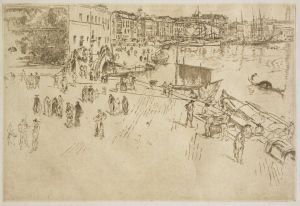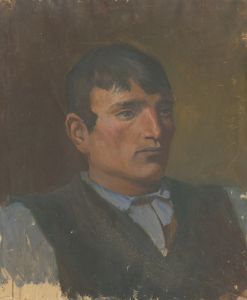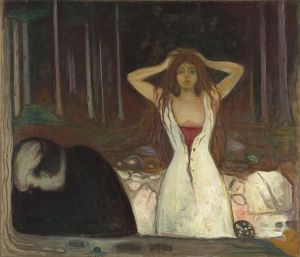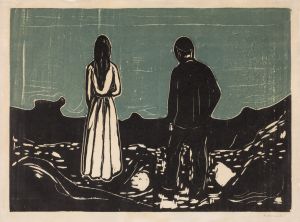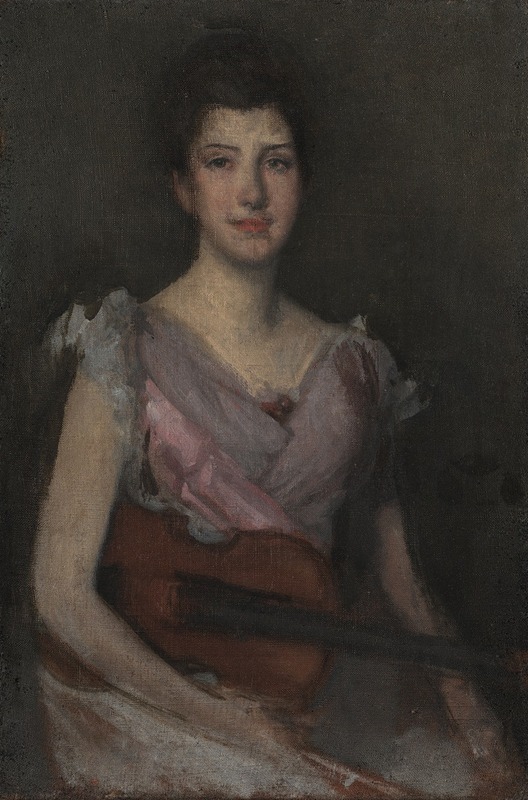
The Violin Player
A hand-painted replica of James Abbott McNeill Whistler’s masterpiece The Violin Player, meticulously crafted by professional artists to capture the true essence of the original. Each piece is created with museum-quality canvas and rare mineral pigments, carefully painted by experienced artists with delicate brushstrokes and rich, layered colors to perfectly recreate the texture of the original artwork. Unlike machine-printed reproductions, this hand-painted version brings the painting to life, infused with the artist’s emotions and skill in every stroke. Whether for personal collection or home decoration, it instantly elevates the artistic atmosphere of any space.
James Abbott McNeill Whistler was an American artist known for his significant contributions to the art world during the late 19th century. He was a leading figure in the Aesthetic Movement, which emphasized art for art's sake, focusing on beauty and visual harmony rather than narrative content. Whistler's work often featured a subtle use of color and a keen interest in the interplay of light and shadow.
"The Violin Player" is one of Whistler's lesser-known works, and there is limited information available about this specific painting. Whistler's oeuvre includes a wide range of subjects, from portraits and cityscapes to nocturnes and seascapes, but "The Violin Player" does not stand out as one of his most famous pieces, such as "Arrangement in Grey and Black No.1" (commonly known as "Whistler's Mother") or "Nocturne in Black and Gold: The Falling Rocket."
Whistler's style was heavily influenced by his time in Europe, particularly in Paris and London, where he was exposed to various artistic movements and prominent artists. He was known for his innovative approach to composition and his use of a limited color palette, which can be seen in many of his works. Whistler often titled his paintings using musical terms, reflecting his belief in the connection between visual art and music. This approach is evident in his series of "Nocturnes" and "Symphonies."
While specific details about "The Violin Player" are scarce, it is likely that the painting reflects Whistler's interest in capturing the essence of his subjects with a focus on mood and atmosphere rather than detailed realism. His portraits often convey a sense of introspection and subtle emotion, achieved through his delicate brushwork and nuanced use of color.
Whistler's influence extended beyond his paintings; he was also known for his writings on art and his role in the famous libel case against art critic John Ruskin. The case, which Whistler won, was significant in the art world as it highlighted the tension between traditional art criticism and the emerging modernist perspectives that Whistler represented.
In summary, while "The Violin Player" by James Abbott McNeill Whistler is not one of his most documented works, it is likely to embody the characteristics that define his artistic style: a focus on aesthetic beauty, a harmonious composition, and an emphasis on mood and atmosphere. Whistler's legacy as a pioneer of modern art continues to be recognized, and his contributions to the Aesthetic Movement have left a lasting impact on the art world.






